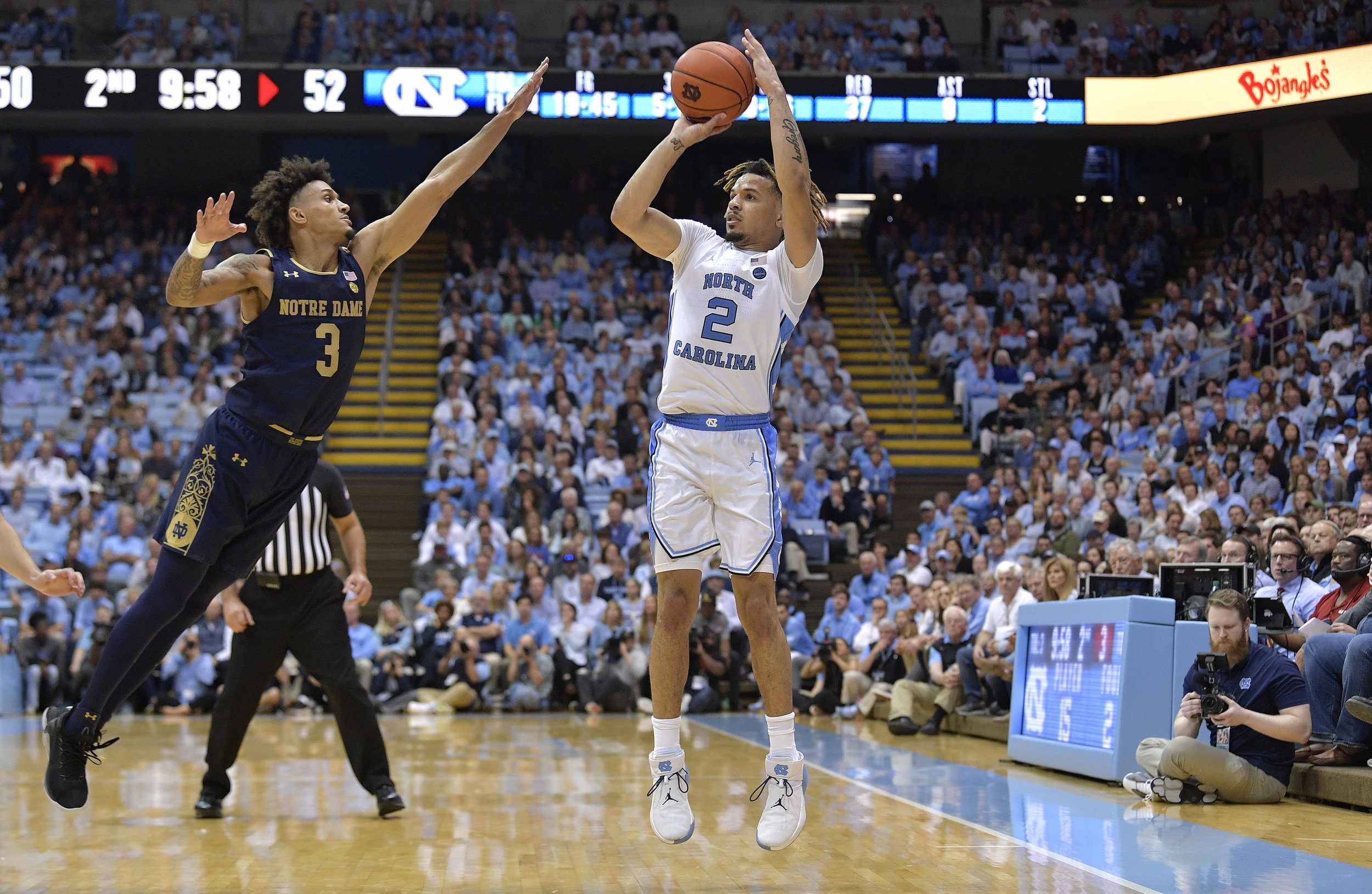I Got The Magic in Me: The Rise of Cole Anthony
In the 2020 NBA Draft, the Orlando Magic selected Cole Anthony, a 6’2 guard out of the University of North Carolina with the 15 th pick of the 1 st round. Coming out of high school in 2019, Anthony was the 3rd overall player in his class, so this draft slot represented a slight decrease in perceived value among NBA franchises. The main couple reasons behind this are Anthony’s struggles shooting the ball and playmaking during his time at UNC, which were supposed to be strengths for the young high flyer.
Photo From: The Spun (Sports Illustrated)
When it comes to shooting, Anthony was dreadful in his college year. He shot just 38% from the field, 35% from deep and 75% from the line, good for a 50% true shooting percentage. Last season, his first year in the NBA, things did not change much. Anthony shot 40%, 34% and 83% respectively, good for an identical 50% true shooting percentage. However, this year, his second in the league, has been much different. His shooting splits have jumped to 43%, 38% and 87% at the time of writing. This boost has helped raise his true shooting percentage all the way up to 56%, a massive increase. The main driver behind this swell in true shooting is Anthony’s shot selection. Last season, he took 50% of his shots from the inefficient mid-range, on which he averaged a paltry 0.73 points per shot, and 50% of his shots from behind the arc or at the rim, on which he averaged a very solid 1.09 points per shot.
The solution was simple: take less mid-range shots and take more shots in close and out deep. He has done exactly that this season, now taking only 39% of his shots from mid-range and 61% of his shots either at the rim or behind the three-point line. Thanks to this surge in efficiency, Anthony’s points per 36 minutes has skyrocketed from 17.1 in last year to 21.6 this year. While these scoring numbers are awesome, there is still room for even more growth.
Anthony has similar raw shooting splits to the elite scoring machine that is James Harden, a career 44%/36%/86% shooter, but there is a large gap in true shooting. Harden holds a career true shooting percentage of 61%. If Anthony can change his shot distribution to match Harden, who takes only 27% of his shots from the mid-range, the sky is the limit for Anthony as a scoring threat.
Photo From: Busting Brackets (NBC)
Playmaking was also supposed to be a big strength for Anthony, but at UNC he averaged 4.0 assists and 3.5 turnovers per game. This assist to turnover ratio of 1.14 is very poor. Things got much better once he reached the NBA, however, as he improved to 4.1 assists and 2.3 turnovers per game in his first season, good for a respectable 1.78 assist to turnover ratio. He has been even better this year, posting 5.6 assists and 3.0 turnovers per game for a 1.87 assist to turnover ratio. This is most likely due to playing with real professional teammates in the NBA, which are much better shooters and finishers than his college teammates and raise his assist numbers.
Another big part of Anthony’s growth as a scorer and playmaker that can’t be overlooked is the fact that during his season at UNC, they had their worst team in years, finishing with a losing record for the first time since the 2001-02 season. Because of this, he was forced to take more shots at a higher degree of difficulty than what was to be expected of a freshman, since none of his teammates were on the same level as him. Now that he is in the NBA and surrounded by much better professional teammates, he is able to trust his teammates to make more shots when he passes the ball and get him better looks when he is shooting the ball. This helps take pressure off of himself to do everything like he had to try to do in college. The lesson here is that stats need to be taken in proper context. Especially in a sport where the ball is shared like hoops. Cole Anthony was always an awesome basketball player, and is finally in the right system with the right players around him to let all of his talent shine on a national stage.
Photo From: The Rookie Wire (NBA Today)
Coming from a baseball background, the analytics behind each sport are fundamentally very different. In baseball, it is a straight one on one battle between the pitcher and hitter, but in basketball it is a chess game between teams with different pieces with varying strengths and weaknesses. I think the extra moving parts makes basketball that much more intriguing. The future is bright for Cole Anthony, and as a Magic fan, I can’t wait to see him reach his full potential.
(all stats pulled from basketball-reference.com)


